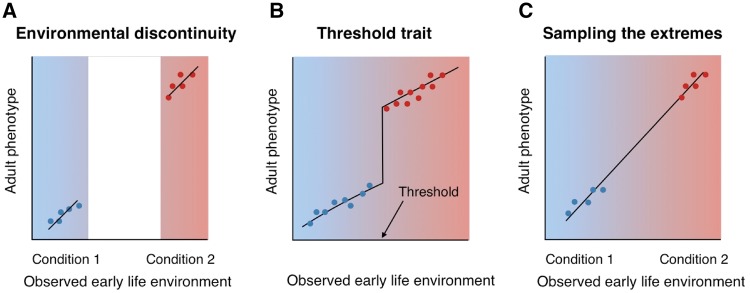Figure 1.
Polyphenisms (the appearance of discrete phenotypes in response to environmental variation) can arise in two ways: (A) when environmental variation is discontinuous so that only two regions of the reaction norm are ever expressed, or (B) when the organism exhibits a switch point or threshold value at which an alternate morph is produced. Modified from [112]; colored backgrounds indicate the nature of environmental variation, while dots indicate the environments in which organisms are sampled. Most research on the genes and molecular mechanisms underlying developmental plasticity has focused on organisms that naturally exhibit polyphenisms of the type depicted in (A) or (B), or has focused on the extremes of a phenotypic distribution that is naturally continuous, as depicted in (C), such that an ‘artificial polyphenism’ is created for laboratory study. Few studies have examined a range of developmentally induced, continuous phenotypic variation of the sort typically exhibited by humans and other vertebrates, though this has been attempted in some cases (e.g. [87, 115, 169])

